It’s our most comprehensive report ever, measuring a record 127 categories and including grocery sales data from discounters Aldi and Lidl and online giant Amazon for the first time
On a drizzly day in April 1990, a new grocery store quietly opened its doors in the Birmingham suburb of Stechford. Locals were bemused. The 2,000 sq ft store stocked only 600 items, all spilling out of wooden pallets and torn cardboard boxes. There were no baskets. No card payments. And checkout assistants scanned items at such speed that the handful of customers who ventured inside could hardly pack their bags fast enough.
Is this the “anonymous, slightly alarming face of 1990s grocery shopping”, asked one visiting reporter from The Times a few weeks later. It might have caught on in mainland Europe, he remarked, but Aldi would never gain a foothold in the UK.
Thirty-five years, 1,000 more stores and a pretty healthy 10% stake in the UK grocery market later, it’s fair to say Aldi has proven those early sceptics wrong.
In fact, alongside Lidl – which entered the UK fray four years later, opening its first 10 stores in 1994 and now commanding an 8% market share – the two chains have well and truly transformed the country’s grocery landscape, forcing the supermarkets to up their games on price, supply chain and in-store efficiency, branding, ranging and own label innovation.
“This transformation marks the culmination of a steady, deliberate evolution,” says Steph Thomas, retail experience business lead at VCCP. “Initially perceived as fringe players catering to budget-conscious shoppers, Aldi and Lidl have transitioned into mainstream competitors.”
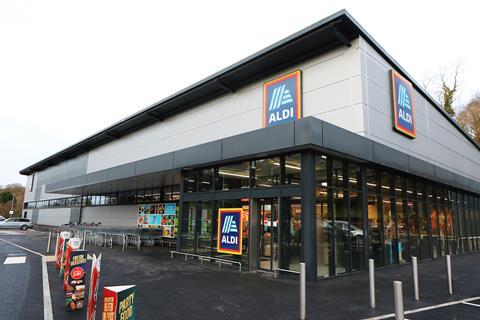
The Grocer’s Top Product Survey has also evolved, to reflect changes in the market. First published in 1997 (as Top Brands) and featuring 16 reports, this year’s exclusive round-up includes 46 reports, across a record 127 categories and thousands of products. But the biggest change this year is the inclusion of sales data from Aldi and Lidl, for the first time. As well as Amazon.
It’s “the largest EPOS data change in over 10 years and we are pleased to have introduced these improvements to our Scantrack universe,” says Rachel White, NIQ UK & Ireland MD.
So, what difference have the new players made?
Well, as you would expect, the change has boosted grocery’s gross value in the past year, increasing by around 20% to £161bn in total value sales across the 127 categories tracked, versus £128.9bn in the 2023 survey.
But their inclusion tells us much more than that about the changing state of British grocery shopping in 2024. It lays bare the ongoing impact of stretched household budgets on where, what and how we shop, the power struggle between brands and private label, and the strategies deployed by supermarket execs as they battle for market share at a time when – as Aldi and Lidl have demonstrated time and time again – everything is up for grabs.
In fact, rarely have those shifting loyalties been more apparent than in the past 12 months.
“This time last year it was all doom and gloom,” says Mike Watkins, NIQ head of retailer & business insight. “We had high inflation, shoppers were spending less, unit growth was down. Brands were really suffering.”
A more nuanced picture
Not surprisingly, sales at the discounters were buoyant. In September last year, Aldi was the UK’s fastest-growing supermarket. The following month, Lidl overtook Asda to become the third-largest supermarket in London, achieving an overall share high of 9.1%.
But in 2024, the picture is more nuanced.
In the first six months, the relentless growth of Aldi and Lidl largely continued, but in the second half came a surprising reversal. By July, Aldi was in negative growth for the second successive month and – though Lidl continued to grow steadily – their combined share dipped below 18%. Elsewhere, variety discounters were also starting to struggle. B&M reported a 3.5% decline in like-for-like sales and, earlier that month, Poundland reported a 6.9% decline in like-for-like sales in the three months to 30 June.
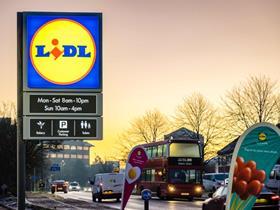
On the one hand, this gradual migration back towards traditional grocers reflects their relentless efforts to close the gap with the discounters on their biggest differentiator: price.
It’s an approach that has combined both significant investment in price match schemes and the rollout of more strategic promotions off the back of their loyalty card membership models, which have demonstrably increased loyalty for the first time in years.
But it also speaks to a subtle change in the economic climate in which grocery is operating, as inflation begins to stabilise and some UK households enjoy a little more flexibility in shopping budgets.
Though shoppers continue to pay more for less – with total value sales up 3.9% in the last year versus 0.7% volume growth – pressures have started to ease compared with 2023, when Top Products data mapped value growth of 6.4% versus a 3.4% decline in volumes. It might not be a like-for-like comparison – as last year’s survey did not include such a comprehensive set of retailers – but it still illustrates an easing of inflationary pressure.
The behaviour split
The result in grocery shopping has been “a behaviour split”, says Linda Ellett, head of consumer, retail & leisure at KPMG UK. “People still want to save money wherever they can, but they’re now willing to spend on treat categories.
“That means where you’ve got discounters positioned next to more premium grocery options, people might do their basic weekly shop at the discounter but then head next door to pick up something for a weekend dinner or birthday celebration. That combination behaviour is happening a lot more.”
For everyday essentials where there’s arguably less differentiation between retailers, a discounter is now the first port of call for more and more shoppers. In beef, for example, which achieved the year’s biggest absolute value gain (£242.1m), the discount channel continued to storm ahead.
So, whereas beef sales in the major mainstream and premium retailers rose 5.3% in value while recording a small volume decline (0.3%) in the past year, the discounters were able to grow value faster (by 6.8%) and add 2.8% in volumes. They sold the equivalent of an additional 114 million kilos, according to ADHB.
Read more:
-
Top campaigns 2024: Who killed the traditional TV ad?
-
Shoppers have been re-evaluating red meat, but not necessarily in a good way
-
Scratch cooking booms as Top Products shows ingredients sales on the march
In contrast, for a purchase that could be classified as a treat or non-essential, there was greater willingness to reach for products not typically on discounter shelves. For instance, despite Aldi UK releasing an imitation of Kylie Minogue’s sparkling rosé wine so similar that it’s reportedly triggered legal action, it did little to dent growth of the branded original, which is this year’s fastest-growing sparkling wine by volume (19.5%). Tony’s Chocolonely also grew volumes faster than any other chocolate brand (40.5%) despite costing 100% more per 100g than market leader Cadbury Dairy Milk (which saw volumes decline 1.6%).
Lidl’s response to Tony’s growth has been predictable: in September it launched a copycat product. On the other hand, Aldi UK decided to team up with the confectioner earlier this year to introduce a slightly cheaper own label bar dubbed Choceur Choco Changer that follows Tony’s sourcing principles.
“It’s a year where that duality has come back, and it’s not been enough just to trumpet value,” says Alister French, partner at Oliver Wyman UK.
Pickled Coke and sea grapes: TikTok trends of 2024

In October, the songstress went viral for mixing her Diet Coke with pickle juice, jalapeño juice and crunchy veg garnishes.
It was by no means the weirdest trend to take social media by storm in 2024. The year has heralded plenty of unusual – and, in some cases, ick-inducing – recipes on TikTok.
Take the craze for sea grapes. Grown from aquatic plants, the surprisingly crunchy delicacies are filled with a ‘salty liquid’ that bursts into your mouth. Tasty.
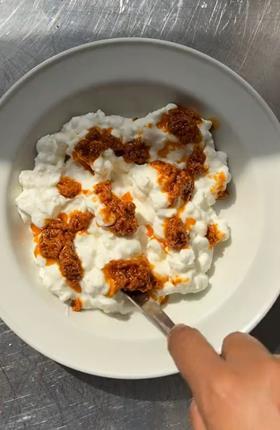
Other fads were more relatable. Such as the viral cucumber recipes that led to tight supplies in UK supermarkets at the end of August.
The craze was kicked off by Logan Moffitt, who showcased a series of salad recipes using a whole cucumber on TikTok – his first including soy sauce, sesame oil, garlic and spring onions.
A similar inspo was behind the raw carrot trend – which, like the cucumber salad, involved slicing the veg into ribbons and mixing with ingredients such as sesame oil and soy sauce.
Some ingredients, however, reached trend status without any need for adulteration. Like cottage cheese.
At the start of the year, younger generations began lapping up the delicacy – previously associated with 1990s diet culture – with simple recipes such as cottage cheese on toast.
That soon snowballed into adventurous creations such as cottage cheese bowls and even cottage cheese protein cookie dough.
The protein element goes to show diet culture may be out in 2024, but functional foods are still very much in.

The combo of cherry juice, seltzer, and a scoop of magnesium was said to lull its drinkers into a sound sleep.
The claim was much debated and spawned several reviews, one of which gave insomniacs the sound advice: “it’s always worth visiting your GP”.
But not all trends can be consigned to 2024. After Dua Lipa’s concoction, pickles are tipped by Pinterest to be a key trend of 2025 – to be paired with fries, margaritas and, concerningly, cake.
Shoppers returning to the mults
It’s helped supermarkets that brands have invested in more promotions. As cost price increases have been recovered, volume sold on deal for branded products has ranged from 31-39%, peaking during the Euros and driven by beers wine and spirits. Increased support from brands has also been essential in boosting supermarket retail media sales – a second advantage their data-led approach typically offers over the discounters.
But before any supermarket CEO gets too excited, NIQ’s Watkins argues the slowdown in Aldi sales is something of a natural correction of the market. Yes, shoppers are drifting back to the retailers, brands and products they neglected at the peak of the cost of living crisis but, given Lidl’s continued growth, he suggests an overall consolidation is in play as they’ve taken longer to reach their full potential.
“The discounted share has certainly stabilised,” he says. “But that’s a course correct in terms of the double-digit growth they had at some stages last year. What that means is shoppers who spent a lot more with the discounters at the height of inflation have come back to spend more at the supermarkets. It’s natural but, really importantly, they’ve not deserted the discounters.”
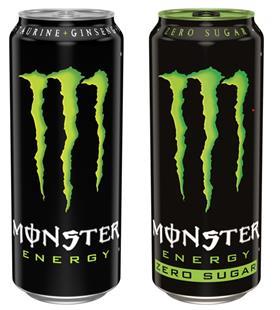
As retail consultant Fiona Fitzpatrick says “inflation may not be increasing at the same rate, but let’s not forget it’s already done its work, [and] the Labour budget hasn’t done anything to improve confidence.”
Shopping habits have fundamentally changed, Fitzpatrick believes, with many shoppers carefully splitting their budgets. There’s “more bulk-buying every other week of essential, often private-label meal ingredients at Tesco, Asda, Morrisons or the discounters to stock up to make home-cooked family meals [and] topping up when we need to at high street convenience”. This is borne out by a look at the retail channel split from NIQ, which shows a 0.6% fall in volume sales at smaller convenience outlets versus 0.7% growth at bigger box superstores.
As VCCP’s Thomas says: “Value is no longer a temporary priority, it is foundational. While inflation has eased somewhat, the habit of ‘shopping smarter’ persists, with many households actively seeking the best deals across multiple retailers.”
Private label versus brands
It’s a change that has undoubtedly impacted another key dynamic within UK grocery in the past year: private label versus brands.
In 2023, own label finished with more than 63% volume share and 55% value share, according to NIQ data, as the cost of living crisis saw shoppers migrate en masse to cheaper own-brand alternatives. But in 2024, despite the addition to NIQ’s dataset of the discount channel – where private label occupies some 90% of the shelf space – there are signs brands are making a comeback.
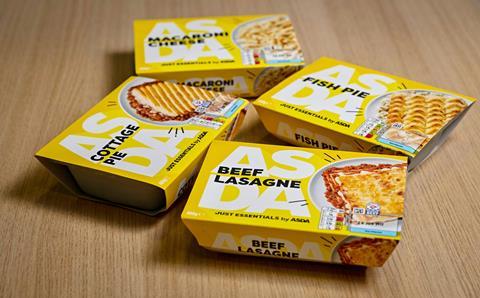
“Brands have grown faster than private label in the second half of the year,” explains Watkins. “It’s been a really strong year for brands. Some but not all shoppers are returning to buying the brands that they may have temporarily left at the height of inflation.” And it’s delivered much-needed volume growth this year: whereas only 33% of all subcategories were in unit growth a year ago, that’s risen to 48% [NIQ RMS 52 w/e 30 November], he adds.
One of the standout performances was the sports & energy drinks category, where branded value growth (6.1%) was double that of own label (3%), which plays out in one of the Top Products Survey’s biggest success stories: Monster. The energy drink brand has raked in more cash than any other, adding £103.6m in retail sales value coupled with a 10.5% volume increase.
It has been an “epic year” for Monster, says Helen Kerr, associate director of portfolio development at Coca-Cola Europacific Partners (CCEP) GB.
“Energy drinks have evolved hugely since they first hit the British market back in the 90s,” she adds. “Monster has played a big part in this evolution, delivering innovation that covers a variety of flavours, juice blends and functional benefits to help make energy drinks more mainstream. As a result, energy drinks have added the second largest actual value growth to the soft drinks category – and much of this is down to innovation, which Monster is known for. Monster contributed more than 26% of NPD value sales over the past year.”
It’s been a similar story in juices & smoothies, where brands sold an additional six million litres (1.3%) compared with a decline of 59 million litres in own label (8%). Two-thirds of brands achieved volume growth.
“Throughout 2024, we’ve seen the continued impact of the cost of living on many consumers,” says Paul Graham, MD for Great Britain at Britvic. “This has led some to rationalise spending, creating trade-offs between trusted brands and private label alternatives, full assortment shops and the discounters. With the pressure on prices, we’ve also naturally seen an increase in entertaining and socialising at home compared with going out.
“However, amidst these pressures, the soft drinks category has remained hugely versatile, and we’ve witnessed remarkably resilient demand as people continue to seek affordable treats or a refreshing pick-me-up, both of them occasions that soft drinks can easily support,” he adds.
Even in the private label heartland of chilled ready meals, branded alternatives stole the show, shifting an additional 17.8 million units versus a 3.7 million decline in own label.

Retailers betting on premium own label
Against this backdrop, private label has had to put up a fight. Premier tier private label in particular have been the recipient of significant investment from retailers, according to Paul Stainton, partner at International Private Label Consult (IPLC).
In May, for example, Asda launched Exceptional, a 500-strong premium own-brand range that followed a £170m investment by the retailer in upgrading its own-brand offer.
The following month, Waitrose followed suit as it unveiled a rebranded No. 1 portfolio complete with on-trend croissant cups and vodka-infused pasta sauce.
And in September, Tesco unleased its latest attempt to help consumers recreate a restaurant-quality dining experience at home with its Finest Steakhouse selection.
The strategy is designed not only to add greater margin but also help lure consumers back from that branded cliff edge, says Stainton. “We’ve seen shift from the cost of living and the emphasis on everyday low price and some of the value tiers, moving toward the need for the retailers to make a bit more margin but also tempt customers to stay with private label through these premium products. Private label is definitely up against a strong fightback from the brands.”
Soft drinks: why innovation is in the driving seat
‘The boom in home cooking’
But while some categories descended into battles between branded and private label, in many others the two shared its rise or downfall equally. Some clear winners and losers have emerged from this year’s Top Products, shaped by changing habits, priorities and preferences.
For example, although 76% of Brits expected to spend the same or less on food when eating out in 2024 compared with 2023, according to a Kantar/Mintel survey, 46% intended to use that as a reason to cook completely from scratch, versus less than a fifth that fancied reaching for a prepared meal, found Mintel.
That’s reflected in the strong volume growth in fresh meat, poultry, fruit and veg. It also explains why dried herbs & spices grew volumes faster than any other category at 14.2% – while ambient meal kits designed to create convenient shortcuts for time-pressed home cooks fared far worse, with volumes declining 3.3%.
“Amidst a rapidly evolving and complex consumer landscape, the herbs & spices category has experienced double-digit growth in 2024 and has proved more resilient than most over the past 12 months,” says James Spalding, consumer general manager for UK & Ireland at market leader McCormick, which added £2.8m (4.8%).

“There is a clear correlation between the strength of this category and the boom in home cooking, [but] while this can, in part, be attributed to the cost of living crisis, with pressures on households driving consumers to eat in more regularly, the wider story is more nuanced.”
There’s greater interest in experimentation and personalisation within recipe creation, he believes, while the growing popularity of the air fryer “has been key in making certain, more convenient and healthier cooking methods more accessible”.
Elsewhere, the so-called lipstick effect – the theory that people may cut back on major purchases, such as white goods or holidays during a tough climate but splash out on small indulgences – meant that impulse categories that have been battered by higher commodity prices – and challenged by new legislation – still hold strong appeal.
“Shoppers have shown they are still looking for treats despite economic considerations remaining on their agendas”
Susan Nash, trade communications manager at Mondelez
On the one hand, chocolate confectionery has added more cash in value than any other category (£532.7m). But all the extra sales – and more – is down to inflation. Volumes have fallen by 3.1%. It’s in this context that Cadbury Dairy Milk’s performance must be viewed. The UK’s favourite chocolate brand added £75m in extra sales. But while volumes are down 1.6%, “shoppers have shown they are still looking for treats, despite economic considerations remaining on their agendas,” says Susan Nash, trade communications manager at Cadbury owner Mondelez.
A strong pipeline of innovation has been essential. Much of it was designed to coincide with Cadbury’s 200th birthday this year, including 180g Dairy Milk bars in nostalgic wrappers, a Dairy Milk & More block (now worth more than £14m) and the Cadbury Creme Egg Tablet, which sold 4.6 million units nationwide over Easter.
“A crucial thing both private labels and branded items are battling for is excitement,” says James Ramsden, executive creative director at Coley Porter Bell. There’s much more dynamic product innovation in the grocery aisle with experimental NPDs and product innovations that are launched with a ‘test and learn’ attitude,” he says. “This is a trend that’s creating exciting competitiveness, with private label offering the quality, price and innovation shoppers are looking for, while brands use their established recognition to give them permission to move into new combinations or flavours. Either way, this is keeping all parties on their toes and shoppers highly engaged as we see the grocery aisle continuously evolving before our eyes.”
Health & beauty to rival the high street
An evolving grocery aisle was another driver of category level change, in fact, as Lidl’s famous ‘middle aisle’ nudged shoppers towards putting more than food and drink in their trolley.
In health & beauty, for example, though pressure on the wider sector remains significant thanks to lifestyle changes such as hybrid work – which has seen “consumption occasions…suppressed”, according to Lyndon Beardsley, director of the Health & Beauty Association. An additional £71m (7.8%) was spent on cosmetics in supermarkets. On the one hand, “grocery retail space has developed substantially in recent years and now sees larger stores deliver a health and beauty experience to rival the best of high street health and beauty specialists”, says Beardsley.
On the other, own label options, or ‘dupes’, such as the Aldi Hotel Collection, have tempted shoppers away from the more established beauty brands towards cheaper imitation products sold exclusively on supermarket shelves.
In fact, though own label accounts for only a fifth of total cosmetics sold in grocery stores, it outperformed branded products considerably on value growth, at 3.4% versus 1.6%.

This might all this change in the year ahead, however.
First, there will be no shortage of challenges on the horizon, according to Harvir Dhillon, an economist at the British Retail Consortium. “After a painful budget, retailers must now grapple with over £5bn of new costs announced by the Chancellor, including in employer National Insurance, business rates and the incoming uplift in the national living wage,” he says.
“Managing this will hold back investment and growth in the short term, while further squeezing already-low margins and risking inflation.
“Retailers have worked efficiently to keep inflation as low as possible for their consumers and have invested great sums to do this,” he adds.
“However, they face a multitude of costs, and there is only so much they can keep absorbing. The impact of climate change and geopolitical tensions, on top of new government policy set out in the painful budget last month will continue piling on the pressure and limit retailers’ ability to keep prices low.”
‘Economic uncertainty looms’
“The next 12 months will be pivotal for the UK grocery sector as it navigates a complex landscape of challenges and opportunities,” agrees Thomas.
“Economic uncertainty looms, especially following challenges imposed on smaller retailers and the knock-on effect on consumer spending post the 2024 budget announcement. The discount channel is a dominant force for now, and retailers and brands alike must continue to innovate and adapt to thrive in this transformed landscape.”
Against this backdrop, the grocery landscape might not look too dissimilar to the recent past, admits Oliver Wyman’s French. “There’ll be a strong set of discounters, but the supermarkets fighting back.”
It’s a dynamic supermarkets are more or less used to these days. But few would have predicted on that drizzly April day in 1990.
Methodology
● The Top Products Survey is sourced using data from NIQ’s Scantrack service, which monitors weekly sales data from a nationwide network of EPoS checkout scanners and represents sales in grocery multiples, Aldi and Lidl, co-ops, multiple off-licences, independents, forecourts, convenience multiples and symbols, online grocery retailers and online fulfilment stores (‘dark stores’), Amazon and Poundland. Personal care and baby products include chemists. Some category definitions are subject to change.
● All data is for 52 weeks to 7 September 2024.
Copyright
● The Top Products Survey data was compiled by NIQ exclusively for The Grocer/William Reed. No reproduction of this list or data within, in full or in part, is permitted for commercial use without the prior consent of NIQ.
The Big Book of Grocery: Top Products Survey 2024
- 1
 Currently reading
Currently readingThe Big Book of Grocery: Top Products Survey 2024
- 2
- 3
- 4
- 5
- 6
- 7
- 8
- 9
- 10
- 11
- 12
- 13
- 14
- 15
- 16
- 17
- 18
- 19
- 20
- 21
- 22
- 23
- 24
- 25
- 26
- 27
- 28
- 29
- 30
- 31
- 32
- 33
- 34
- 35
- 36
- 37
- 38
- 39
- 40
- 41
- 42
- 43
- 44
- 45
- 46
- 47




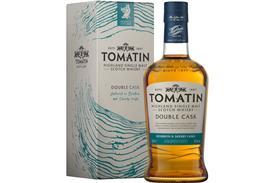
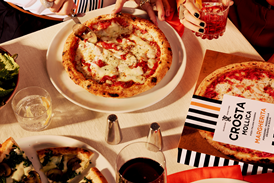
















































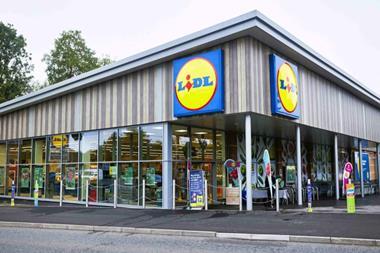

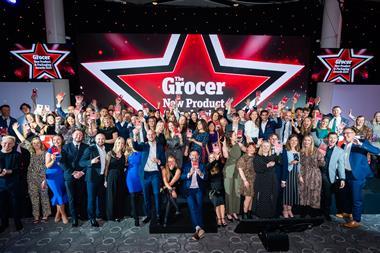
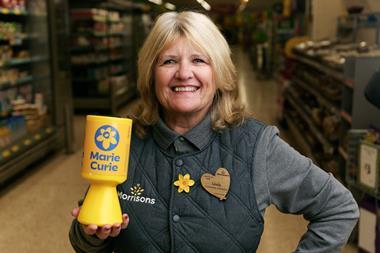
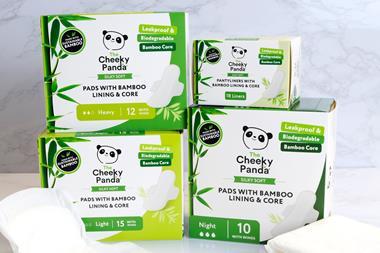


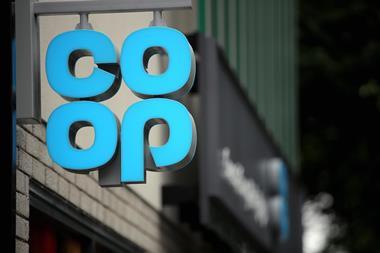




No comments yet